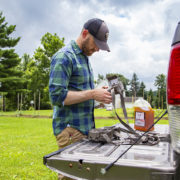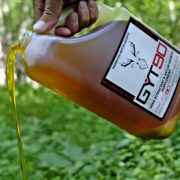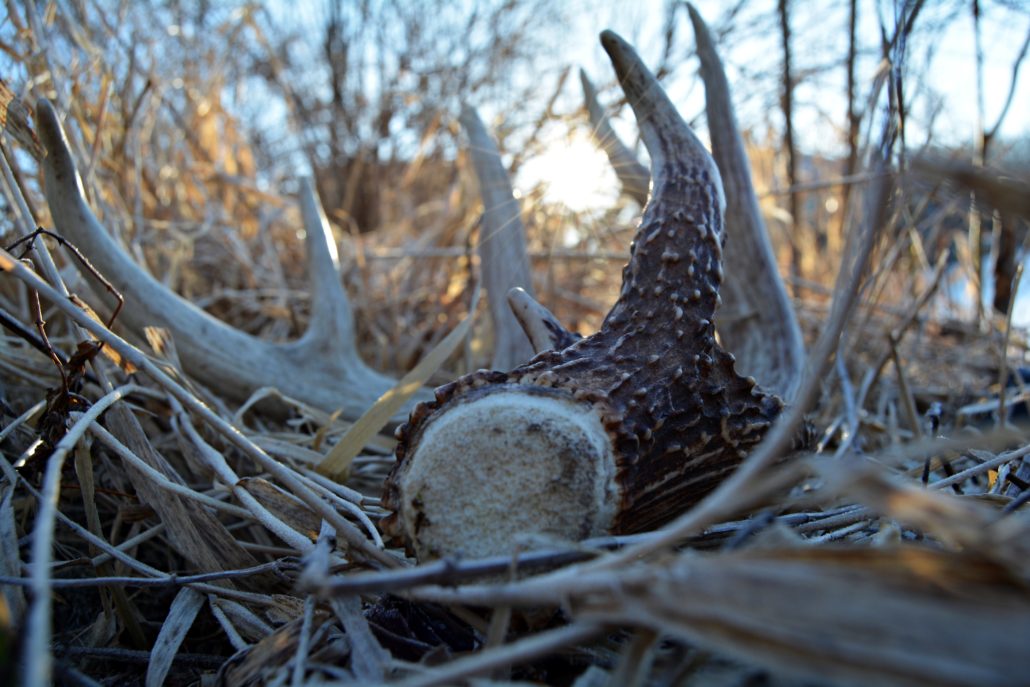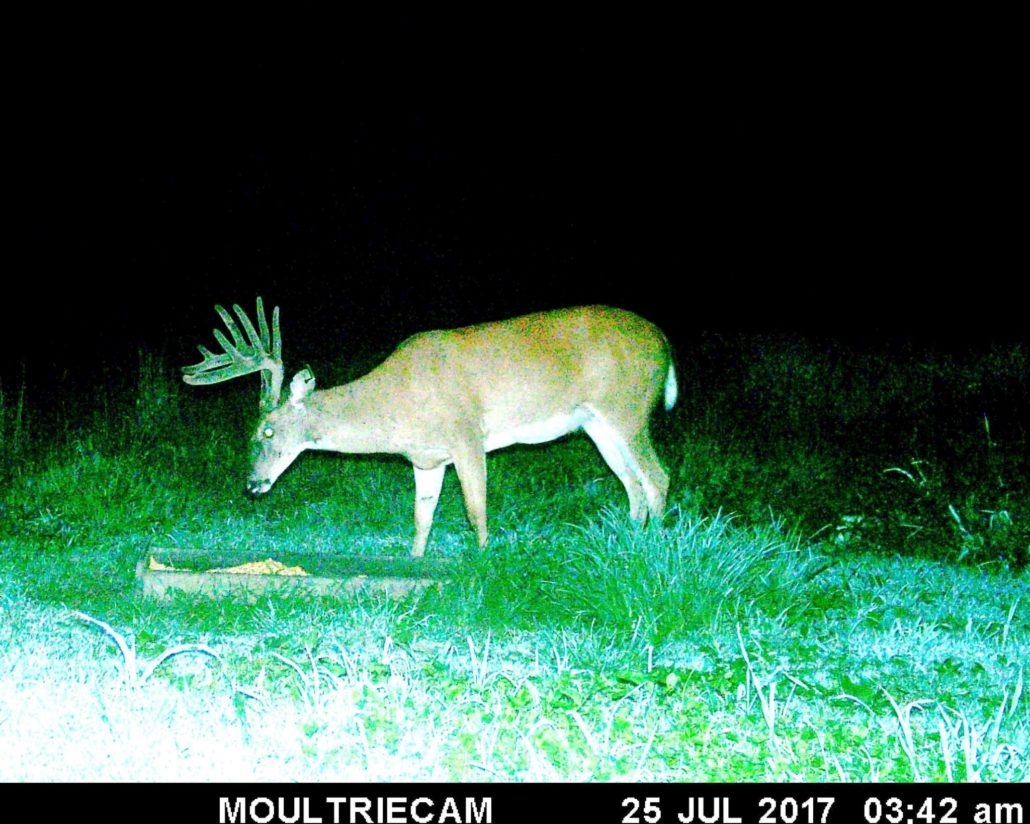How to Maximize Your Trail Camera Pictures This Summer
Trail Camera and Mineral Strategies for Summer Bucks
Trail cameras are widely used by most hunters during two times of the year, summer and fall. Trail cameras are a great way to keep track of new bucks, buck movement, and hunt-able patterns during fall. Fall more or less relates to making observations for hunting but summer is when a lot of critical information beyond just hunting can be generated. This summer data includes fawn recruitment, deer density, and making that all so coveted hit list for the fall. Given the importance of obtaining this type of information, how do you maximize your effectiveness of using trail cameras during the summer? Using supplemental minerals and deer feed to draw deer into your camera sites is a great way to maximize effectiveness. This article will discuss where you should put mineral sites and how many mineral sites you need to increase your effectiveness of using trail cameras.
Mineral and Trail Camera Site Locations
The location of your mineral sites is important to maximize the number of pictures you’ll get. When picking locations it’s important to not overthink it. If your goal is to increase the number of pictures you’re getting, then there’s no need to think about placing mineral sites in high-risk areas such as bedding sites. You don’t need to potentially risk pushing deer out of cover to check your cameras during the summer. Instead, place your mineral sites in areas that are low-risk and are already being frequented by deer. These high-use areas are also particularly important when you are first establishing a mineral site. For example, if you don’t already have an established mineral site for deer on your property, then deer have to learn what supplemental mineral is and where it is located before they will use it consistently. Consistent use of mineral sites translates into more pictures for you. Establishing a mineral site close to a food plot or agricultural field can decrease the amount of time it takes for deer to find these sites. Another location to consider is to establish a site along with a travel corridor so deer can use it on their way from bedding to feeding.
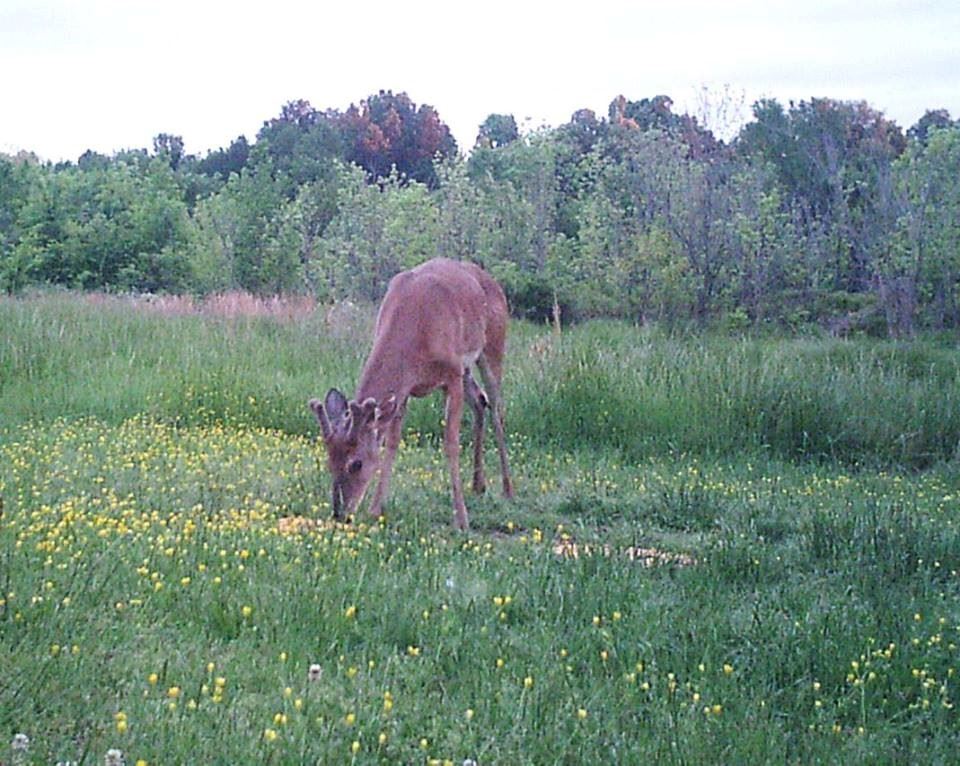
One of the great things about establishing these sites is that deer will continue to use them even after the mineral appears to be gone. This is because rainfall will cause minerals to leach into the soil. This doesn’t mean that you should freshen your mineral sites up because you should. Having a fresh supply of minerals will promote consistent use by deer. But having these established sites means you will have consistent areas to place your cameras year after year.
Mineral Site Density on a Property
Choosing an appropriate number of mineral sites for your property is important when trying to increase the efficiency of running your trail cameras. This may seem counterintuitive, but you can actually have too many mineral sites on a property. But how can that be? More is better, isn’t it? Not necessarily.
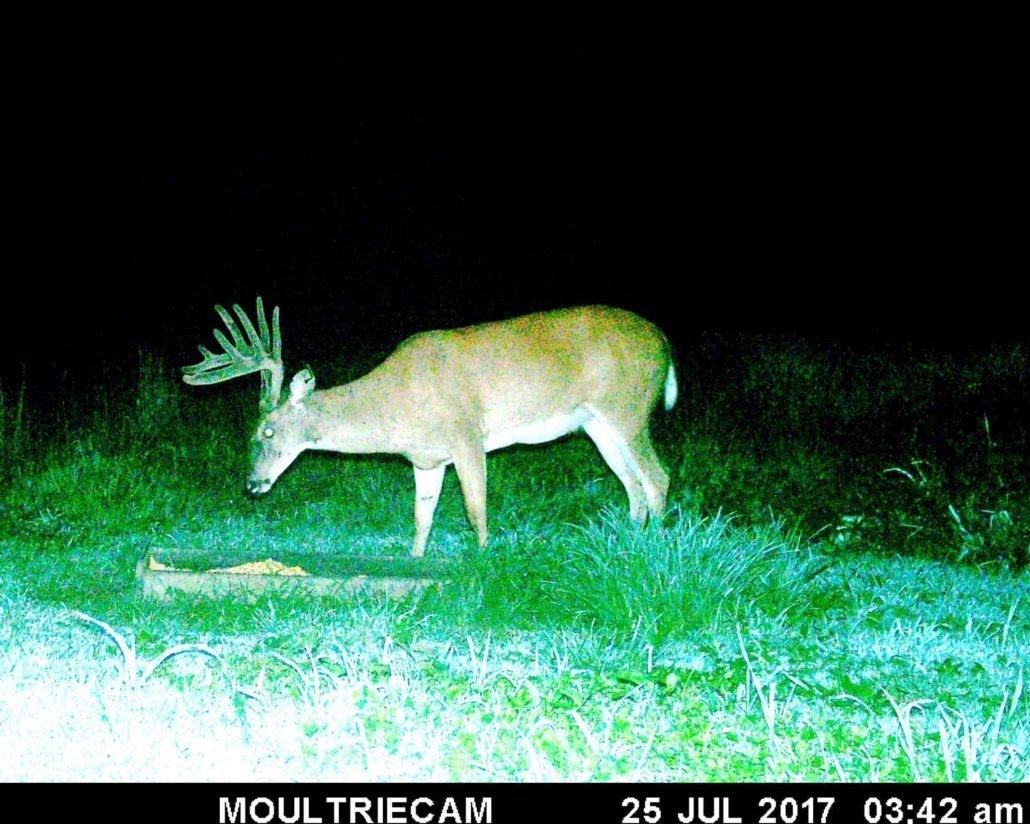
Having too many mineral sites on a property will give your deer herd more options which will ultimately spread their use out among the sites and potentially decrease consistency. Decreased consistency translates into decreasing the number of pictures you will get from trail cameras and decrease your ability to pattern deer for the upcoming fall.
So how many mineral sites do you need on your property? A good rule of thumb is generally one mineral site per 100 acres. Depending on what part of the country you live in, an average home range of a buck is about 1000 acres and the average home range of a doe is about 600 acres. That means if you have a property smaller than that, deer are also using your neighbor’s properties. Although mineral sites can help you hold deer on your property, the odds that an individual deer is exclusively using your property is slim and putting multiple mineral sites within a 100-acre property is overkill. However, there are always exceptions. For example, let’s say you hunt 100 acres and have two food plots on opposite ends of the property. Establishing mineral sites in each food plot would allow you to draw in deer from neighboring properties while allowing for enough sites to reduce competition among deer. Each property is unique so you may have to adjust the number of mineral sites you are establishing.
How GYT 90 Increases Your Efficiency
Using a product like GYT 90 can help increase your efficiency when placing mineral sites and maximize the number of pictures you will get during the summer. GYT 90 contains 90 essential minerals so you know your deer herd will be getting the nutritional supplements they need to be healthy. But what makes GYT 90 different from other mineral products is the way it is carried. GYT 90 is carried in crude soybean oil which acts as an additional attractant. Soybean oil produces a superior scent and taste that will help draw deer into your mineral site. What does using GYT 90 mean for you? Using GYT 90 will increase your efficiency meaning that deer will find your mineral sites faster and you will need fewer sites on your property because you will be attracting more deer to each site. This ultimately translates into decreased costs for you as a consumer. GYT 90 is a versatile product and can be used by itself by simply pouring it onto the ground or on a tree stump, or can be mixed with grain to provide additional nutrition to your deer herd.
How to use GYT 90: Corn
Posted by GYT 90 on Friday, June 1, 2018
If you are actively feeding deer on your property, the use of GYT90 in the feed could double a site for both minerals and feed, lowering site density but increasing site usage and data potential.
Other Considerations
Although using mineral sites may be entirely illegal in some areas, in other areas they are only considered as bait and can still be used and the area can still be hunted if properly handled. Generally speaking, you will need to eliminate leaching of minerals into the soil so when you remove the supplemental mineral, deer stop seeking out any leftover mineral located in the soil. One of the best ways to do this is to use an oil pan or a large bucket to place the mineral in. If you choose to use a bucket, make sure to take the handle off so deer don’t get tangled up in it. It’s also important to make sure whatever you use can hold enough water without overflowing which will ultimately lead to mineral leaching into the soil. You can also use a decaying wood stump, which absorbs the nutrients and allows deer to still consume GYT90. Once you are done with using your trail cameras in that area to inventory bucks or collect data, you simply remove the mineral and you are ready to hunt. About this time, replacing a mineral site with a mock scrape site in the same area could produce a similar attraction to the site even after the mineral is gone for the fall.
Using trail cameras during the summer is just the beginning of building the excitement for the fall hunt. Try some of these tips this summer to help you maximize the number of photos you get with mineral and deer attracting supplements.

